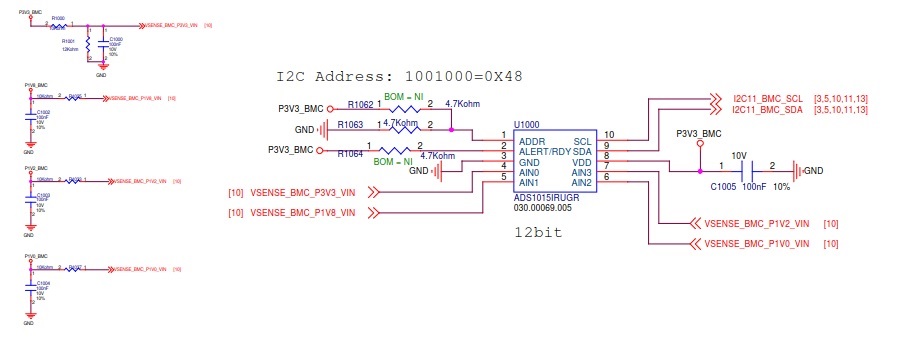Hi Team:
could you help to take a issue below:
We get customer system and tested it recently. But the result is wired,
the design is as follows graph
image.png
AVIN0 monitors 3.3V, AVIN1:1.8V AVIN2:1.0V AVIN3:1.2V
Then for AVIN1: I set Config Register(offset 0x1) to 0xc383(single-shot) , then read offset 0x0 got 0xf0ff
set Config Register(offset 0x1) to 0xc283(continuous) , then read offset 0x0 got 0xe0ff
So as AVIN2: Config Register(offset 0x1) to 0xd583(single-shot) , offset 0x0 got 0xf0ff
Config Register(offset 0x1) to 0x4483(single-shot) , offset 0x0 got 0xe0ff
The return value is not reasonable value for converting
Any incorrect setting or reading procedure I misunderstand??
thanks!

